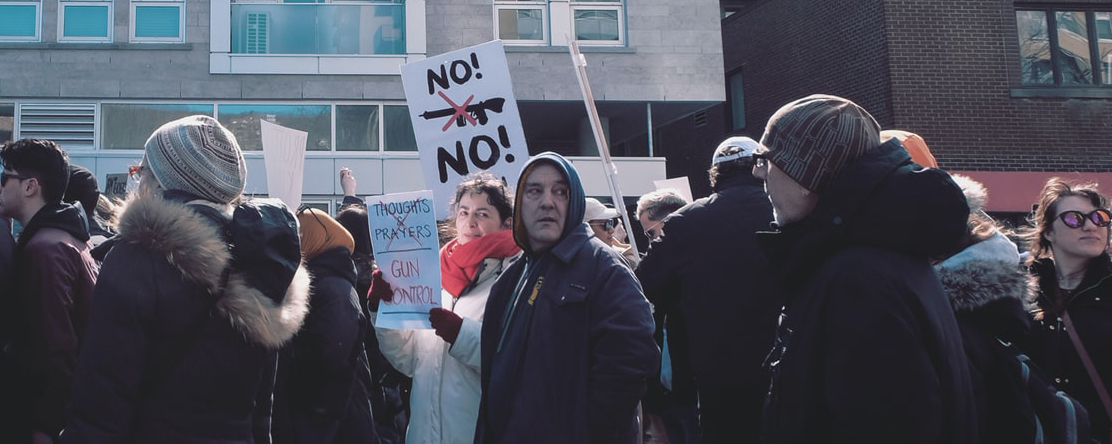
Letter In Support Of Gun Violence Prevention Research Funding from Health Groups to Appropriations Committee (December 2015)
-
Focus Areas
Healthy Communities -
Issues
Violence Prevention -
Expertise
Outreach & Dissemination, Public Policy Advocacy

Get involved: Learn more about PHI’s related efforts to prevent gun violence:
- Read The Need to Replace ‘Ideology, Intuition and Common Sense’ with a Science-Based Public Health Approach to Gun Violence: A Conversation, which explores findings from a recent Dialogue4Health web forum on gun violence research and data collection. Featuring David Hemenway, PhD Professor, Department of Health Policy and Management, Harvard School of Public Health; Alan Leshner, PhD, Chief Executive Officer Emeritus, American Association for the Advancement of Science; Susan Polan, PhD, Associate Executive Director, Public Affairs and Advocacy, American Public Health Association; Jeremy Richman, PhD, Founder & CEO, The Avielle Foundation; and moderated by Linda Degutis, DrPH, Consultant LCD Consulting.
- Watch the recording of the Dialogue4Health webforum, Gun Violence Research and Data Collection: Getting the Facts Straight.
- Sign up for PHI alerts to stay connected.
December 1, 2015
| The Honorable Thad Cochran Chairman Senate Appropriations Committee Room S-128, The Capitol Washington, DC 20510 |
The Honorable Barbara Mikulski Vice Chairwoman Senate Appropriations Committee Room S-146A, The Capitol Washington, DC 20510 |
| The Honorable Harold Rogers Chairman House Appropriations Committee Room H-305, The Capitol Washington, DC 20515 |
The Honorable Nita M. Lowey Ranking Member House Appropriations Committee 1016 Longworth House Office Building Washington, DC 20515 |
Dear Chairman Cochran, Vice Chairwoman Mikulski, Chairman Rogers, and Ranking Member Lowey:
As a diverse group of health professional, public health, and child advocacy organizations, we write to urge you to support research investments to address the public health crisis of gun violence.
We urge you to lift the current ban on funding for the Centers for Disease Control and Prevention (CDC) related to gun violence prevention research. Furthermore, the CDC should be appropriated at least $10 million in FY 2016, along with sufficient new funding at the National Institutes of Health (NIH), to support research into the causes and prevention of gun violence.
The dearth of gun violence research has contributed to the lack of meaningful progress in reducing firearm injuries. Firearm injuries are one of the top three causes of death among youth [i] .
The U.S. has one of the highest rates of injuries, suicides and homicides among developed countries. While the rate of gun-related deaths is down from a high of 15 per 100,000 in the mid- 1990s, it has subsequently plateaued since 2000 at 10 per 100,000 and has remained steady [ii] .
Furthermore, in several states, such as Arizona, Colorado, Michigan, Nevada, Pennsylvania, and Oregon, the rate of gun deaths has already met or exceeded traffic-related deaths [iii]. This is significant because motor vehicle accidents are one of the top two leading causes of unintentional injury deaths, which is the number one cause of death among individuals ages 1- 44 [iv] .
Research can contribute to fewer lives lost, reductions in injuries and changes in social norms. Federal infrastructures already exist to establish prevention and harm reduction strategies. Since the 1950s, a research-based public health approach has translated extensive research into prevention and systems change and contributed to an 80 percent reduction in motor vehicle fatalities per mile driven [v] .
Significant research investments could address these issues by helping provide a more accurate understanding of the problems associated with gun violence and to determine how best to reduce the high rate of firearm-related deaths and injuries. Unfortunately, in 1996 Congress eliminated funding for CDC research on gun violence and accompanied the cut with language barring any research that would “advocate or promote gun control.” The research limitations have also drastically limited the workforce of researchers dedicated to gun violence prevention. It is estimated that fewer than 20 academics in the U.S. currently focus on gun violence [vi] .
In June 2013, the Institute of Medicine released a report outlining a research agenda for addressing firearm-related injuries and deaths as a public health issue. The report highlighted five key areas for research on this topic: characteristics of firearm violence; risk and protective factors; firearm violence prevention and other interventions; the impact of gun safety technology; and video games and other media. The IOM’s report noted that this agenda would be essential in supporting the development of policies to reduce the public health impact of firearms in the same manner as approaches that have found success in other areas, such as motor vehicle safety.
Funding at both CDC and NIH would be an important step toward realizing a robust research agenda and developing public health interventions that could protect children and keep them safe from gun violence. We urge you to provide $10 million in new funding in FY 2016 to support the president’s recommendation for CDC research on the causes and prevention of gun violence, along with sufficient new funding at the National Institutes of Health to further advance this critical research. We also urge members of Congress to oppose any efforts to reduce, eliminate, or condition CDC funding related to gun violence prevention research or critical public health surveillance on violent deaths.
As Congress moves forward with the FY 2016 appropriations process, we welcome the opportunity to work with you on ways to reduce injuries and keep communities safe. For more information, please contact Ami Gadhia at 202-347-8600 or agadhia@aap.org.
Sincerely,
Academic Pediatric Association
American Academy of Child & Adolescent Psychiatry
American Academy of Pediatrics
American College of Physicians
American College of Preventive Medicine
American Congress of Obstetricians and Gynecologists
American Pediatric Society
American Psychological Association
American Public Health Association
Association of Medical School Pediatric Department Chairs
Consortium of Social Science Associations
Hepatitis Foundation International
National Association of County and City Health Officials
National Association of State EMS Officials
National Center on Domestic and Sexual Violence
National Child Abuse Coalition
National Network of Public Health Institutes
National Violence Prevention Network
Pediatric Policy Council
Public Health Institute
Research!America
Society for Pediatric Research
Society for Public Health Education
Trust for America’s Health
Citations:
[i] Dowd, D. and Sege, R. (2012). Policy Statement: Firearm-Related Injuries Affecting the Pediatric Population. Pediatrics. 130;5, e1416-e1423. Retrieved from http://pediatrics.aappublications.org/content/pediatrics/early/2012/10/15/peds.2012-2481.full.pdf
[ii] Wadman, Meredith. The Gun Fighter. Nature. Vol. 496. April 25, 2013.
[iii] USA Today, Death rates from guns, traffic accidents converging, January 9, 2013, accessed online at http://www.usatoday.com/story/news/nation/2013/01/09/guns-traffic-deaths-rates/1784595/
[iv] WISQARS (Web-based Injury Statistics Query and Reporting System). Atlanta: Centers for Disease Control and Prevention (www.cdc.gov/ncipc/wisqars).
[v] Hemenway, David and Miller, Matthew. Public Health Approach to the Prevention of Gun Violence. New England Journal of Medicine. May 23, 2013. 368; 21.
[vi] Wadman, Meredith. The Gun Fighter. Nature. Vol. 496. April 25, 2013.
Work With Us
You change the world. We do the rest. Explore fiscal sponsorship at PHI.
Support Us
Together, we can accelerate our response to public health’s most critical issues.
Find Employment
Begin your career at the Public Health Institute.


